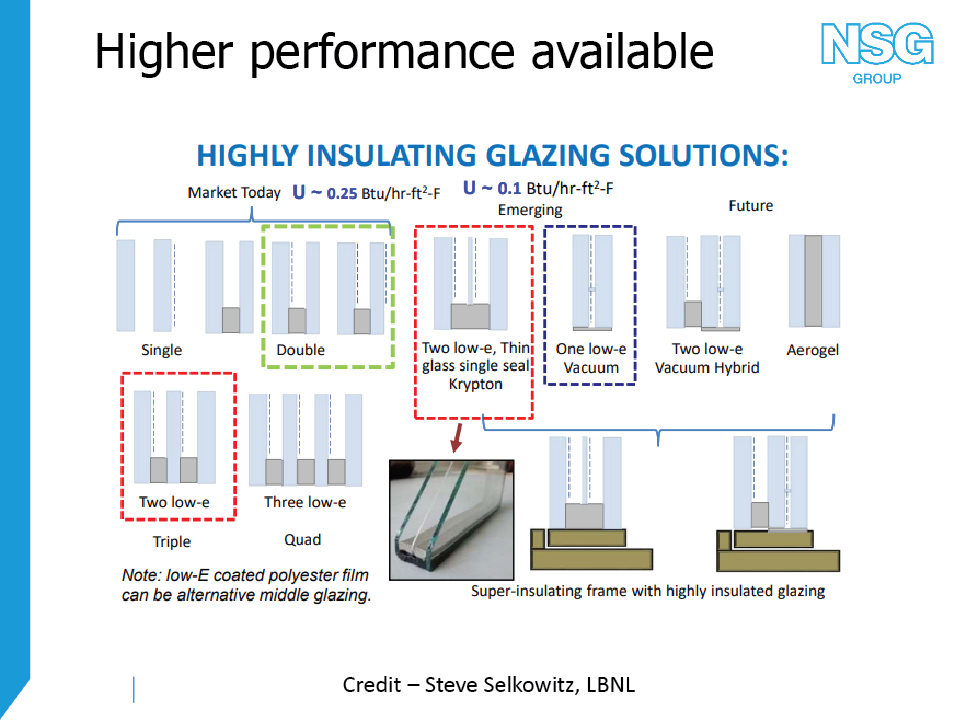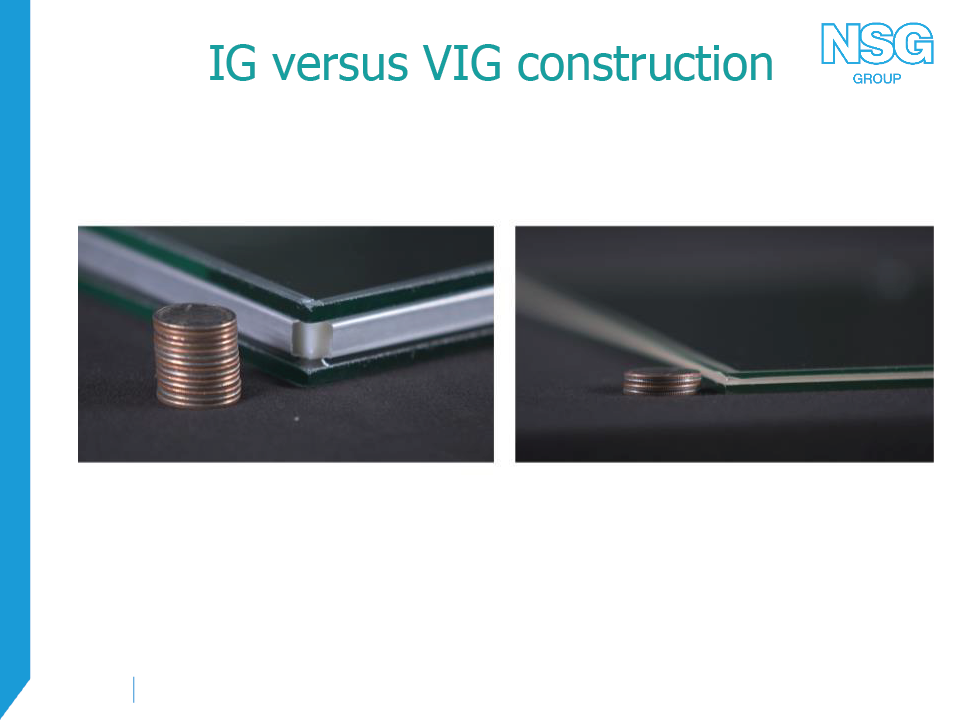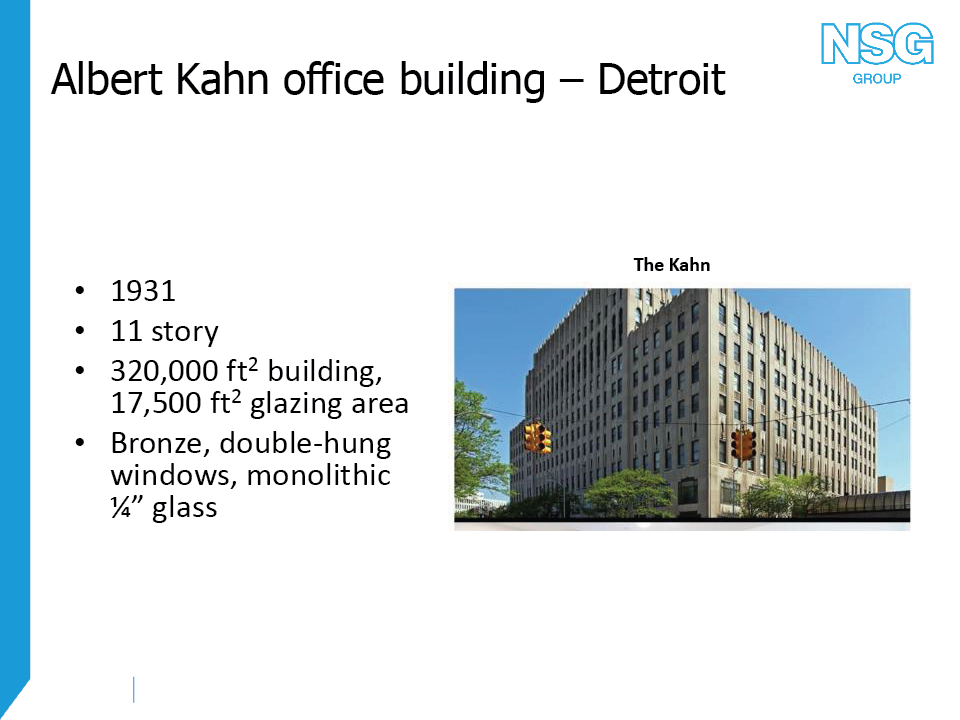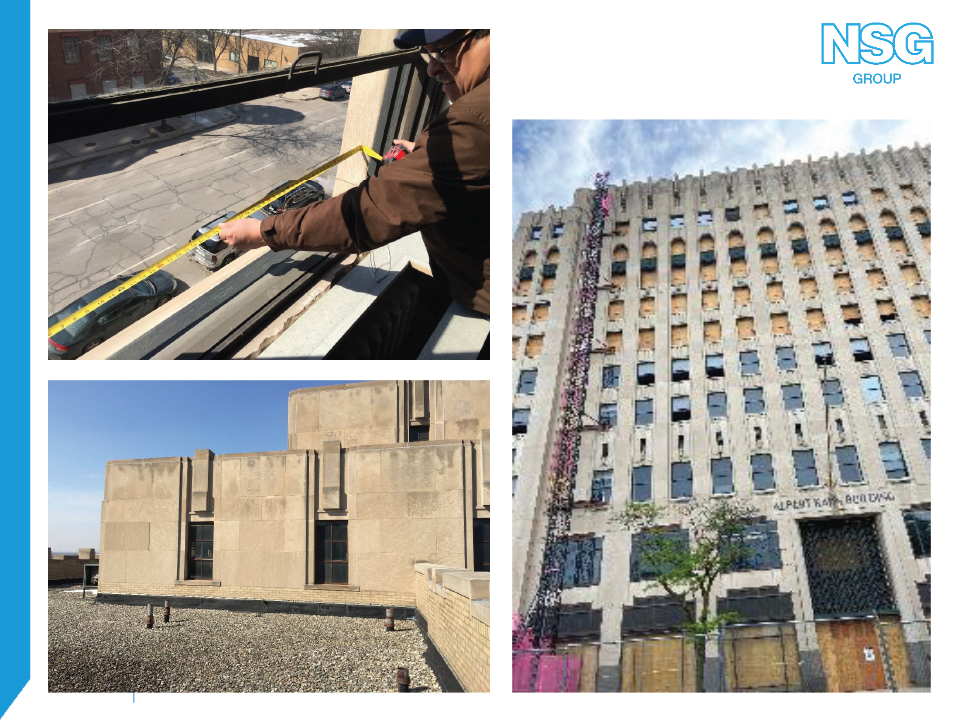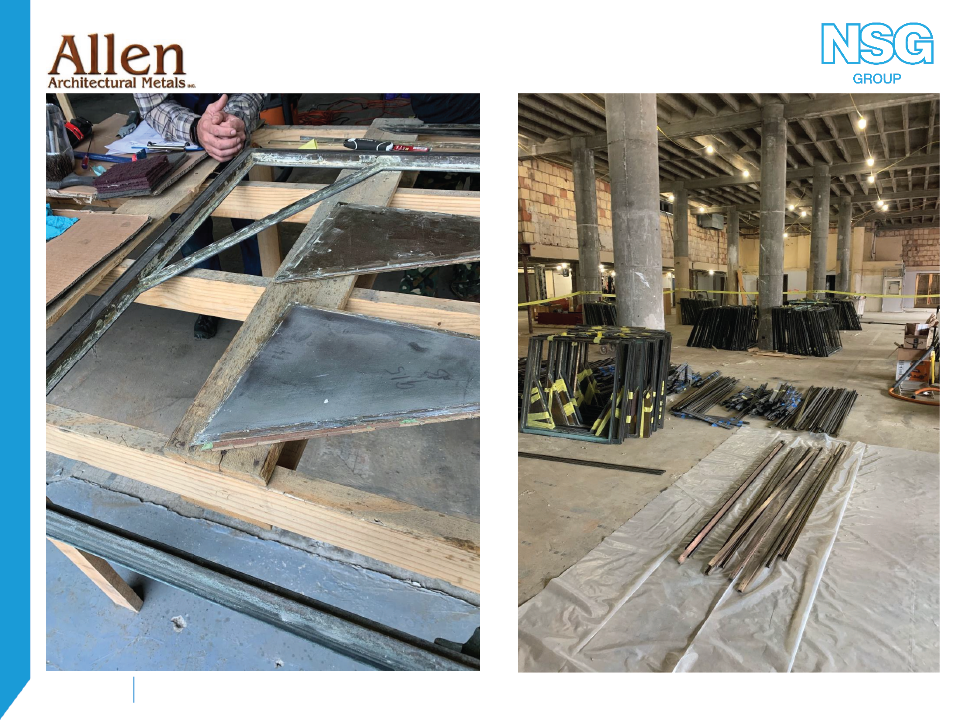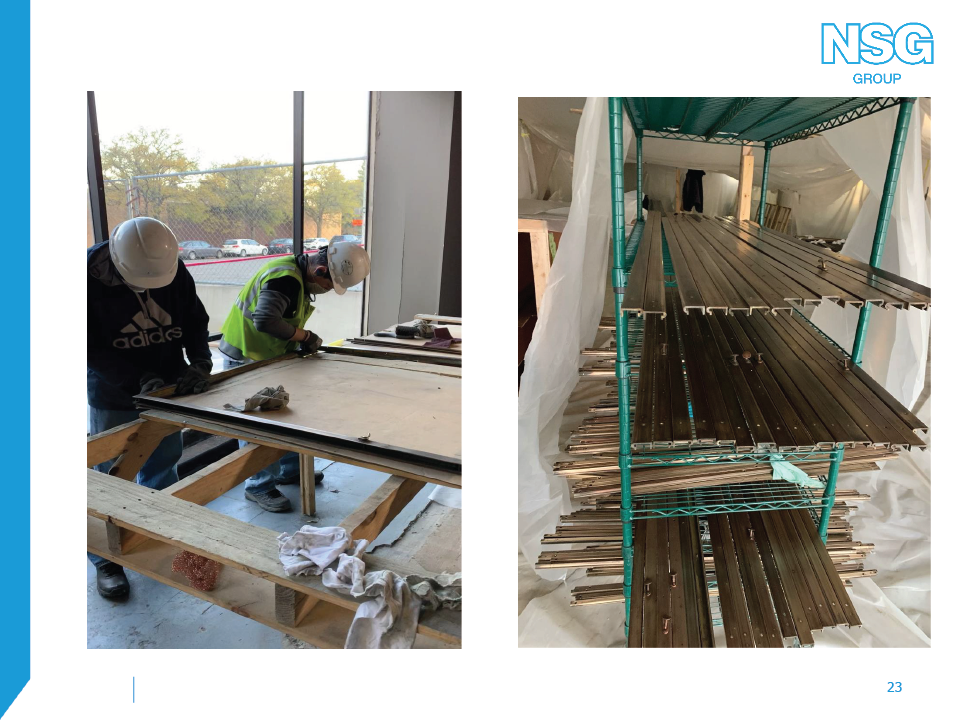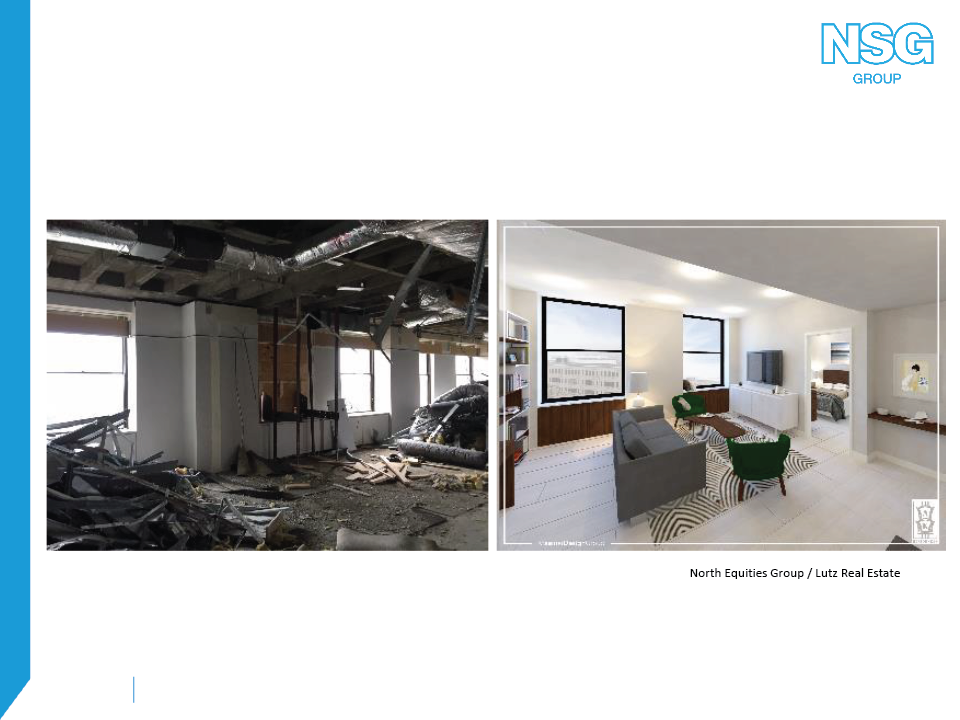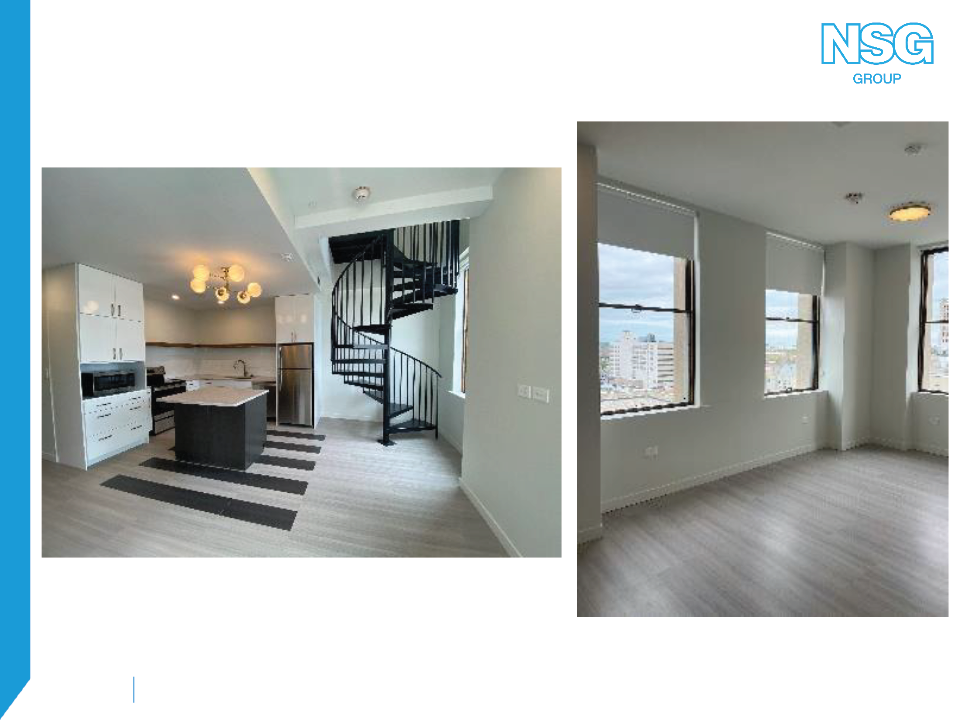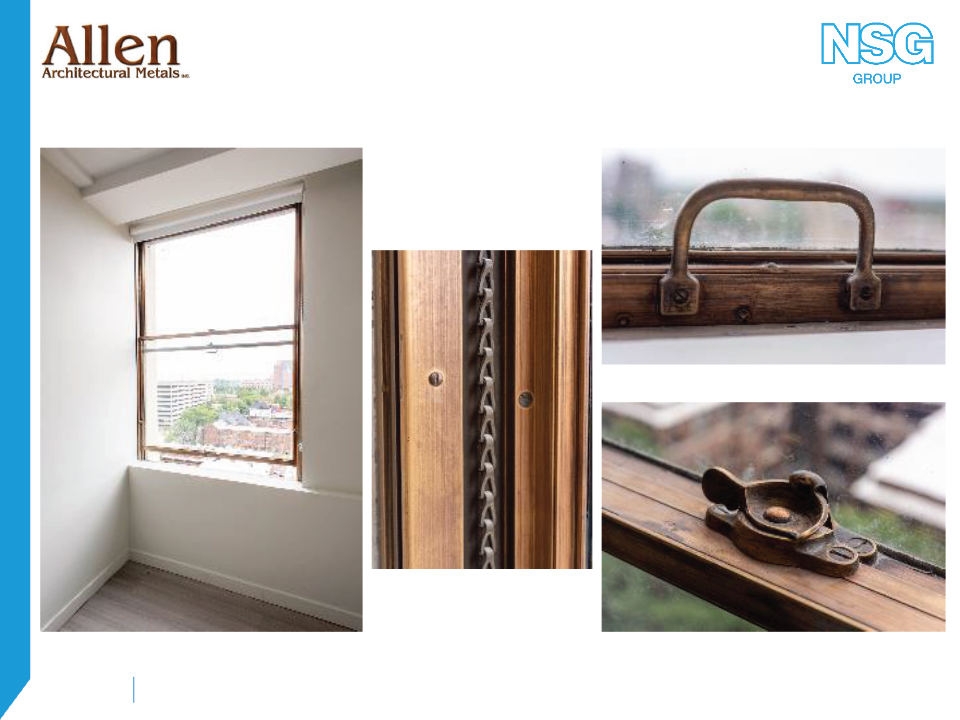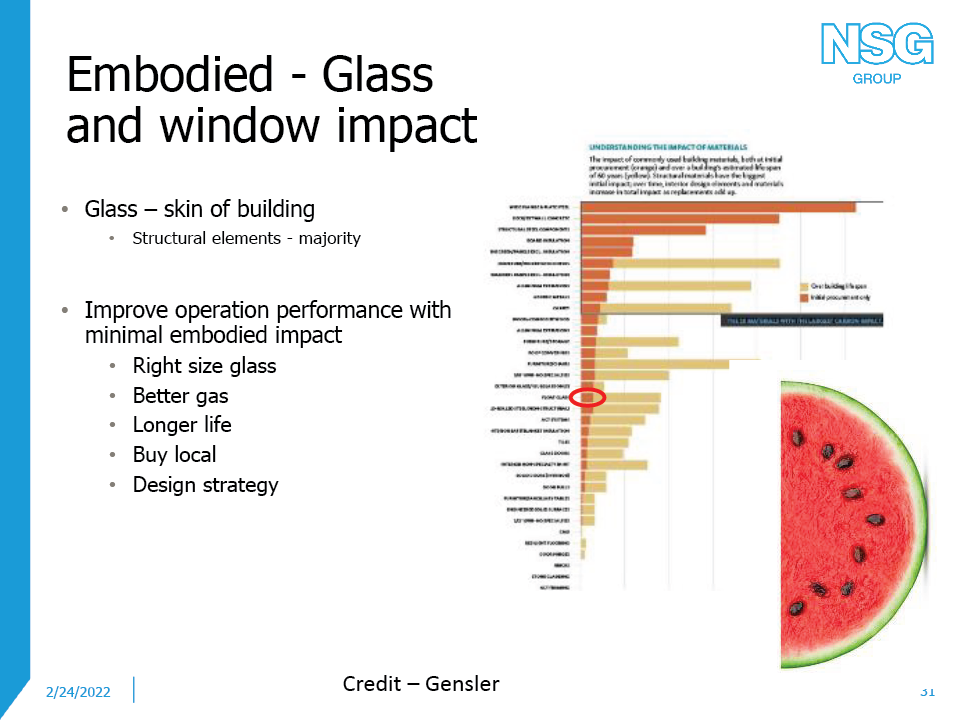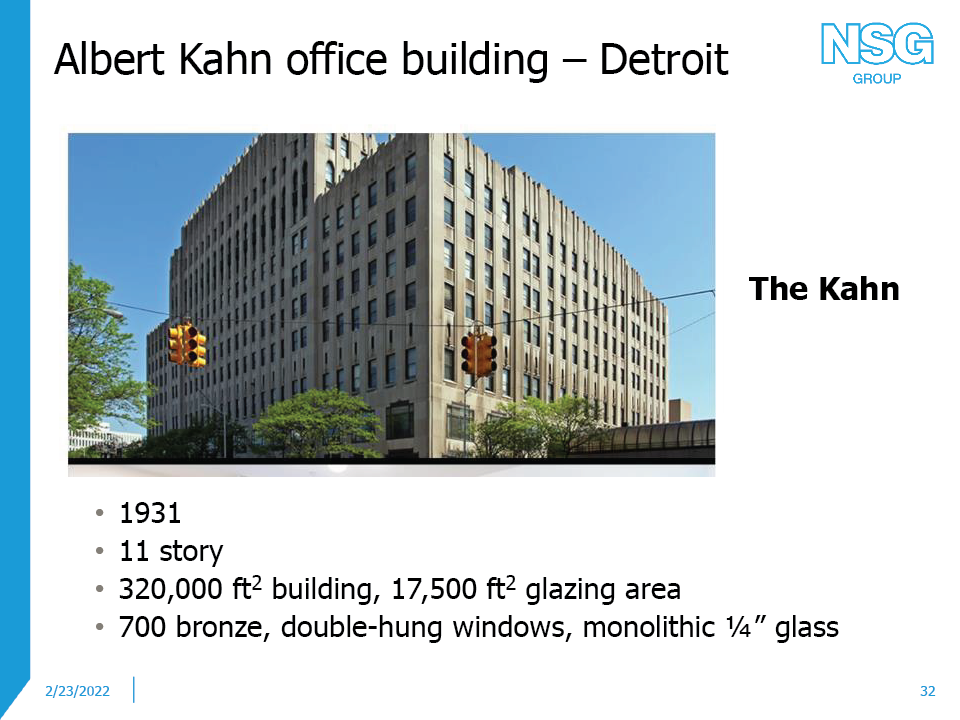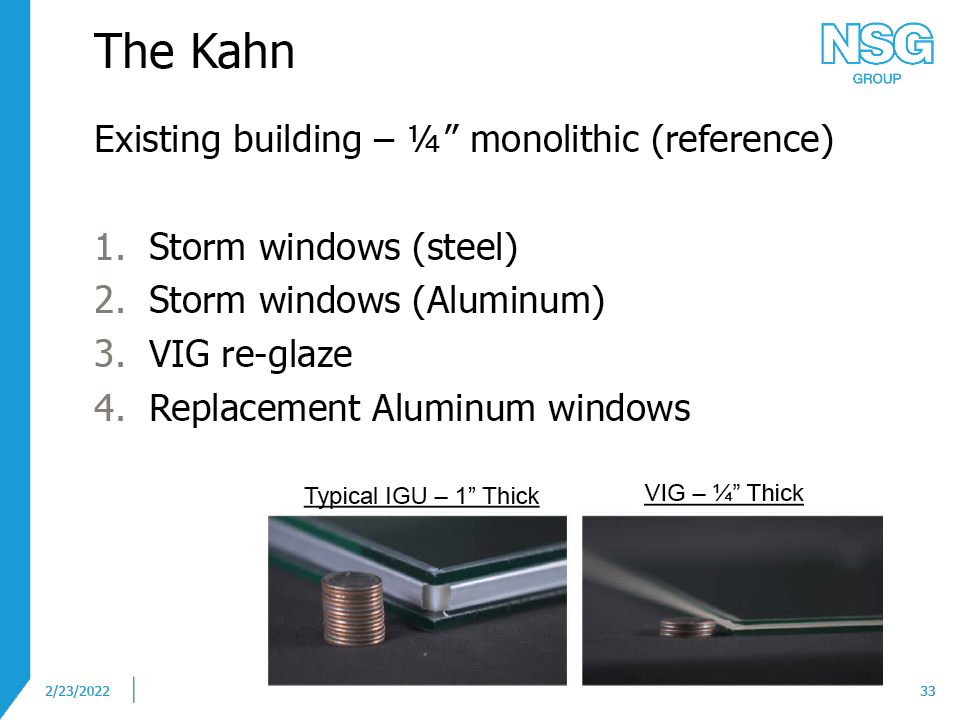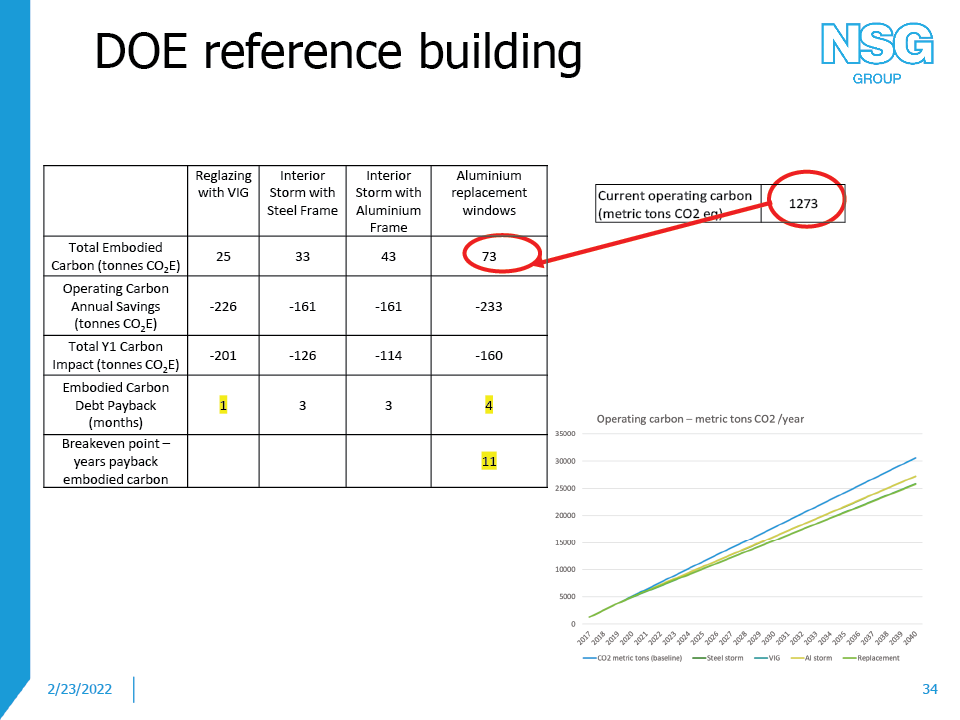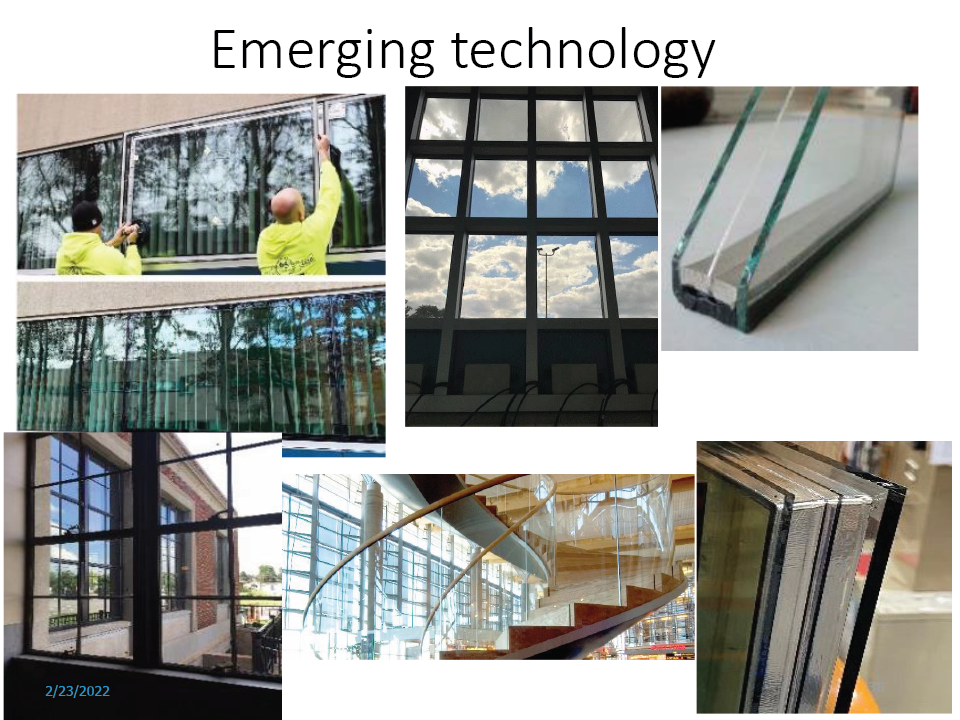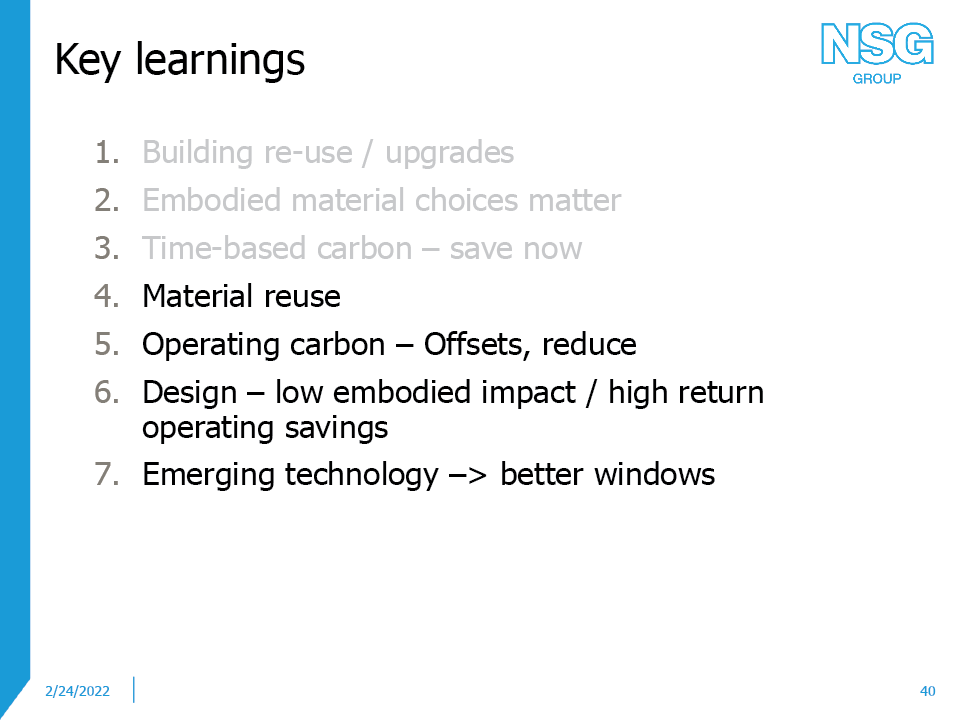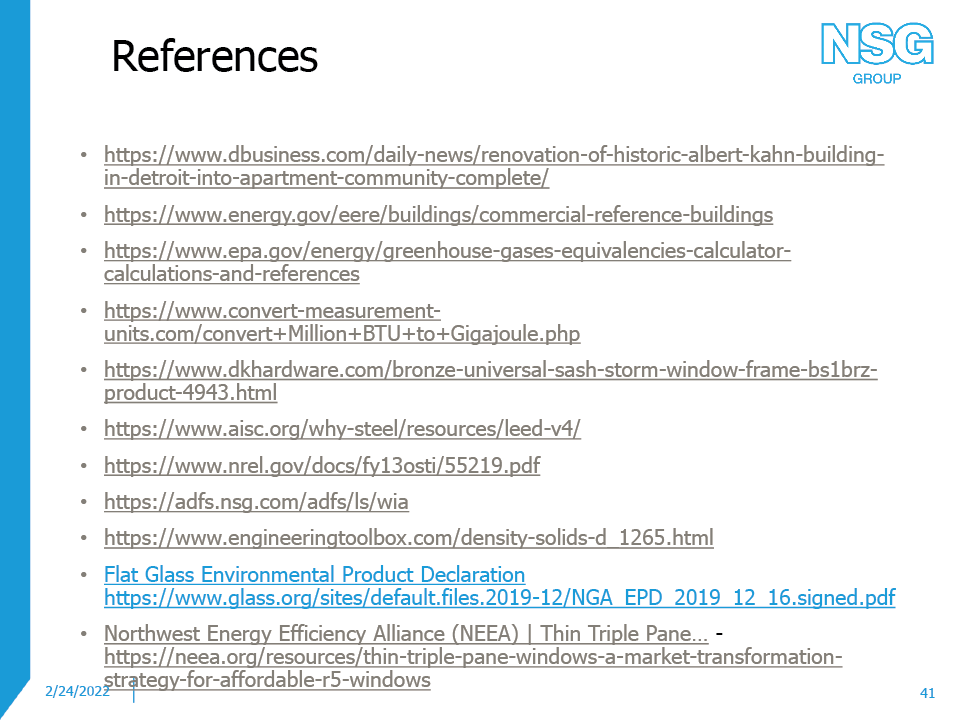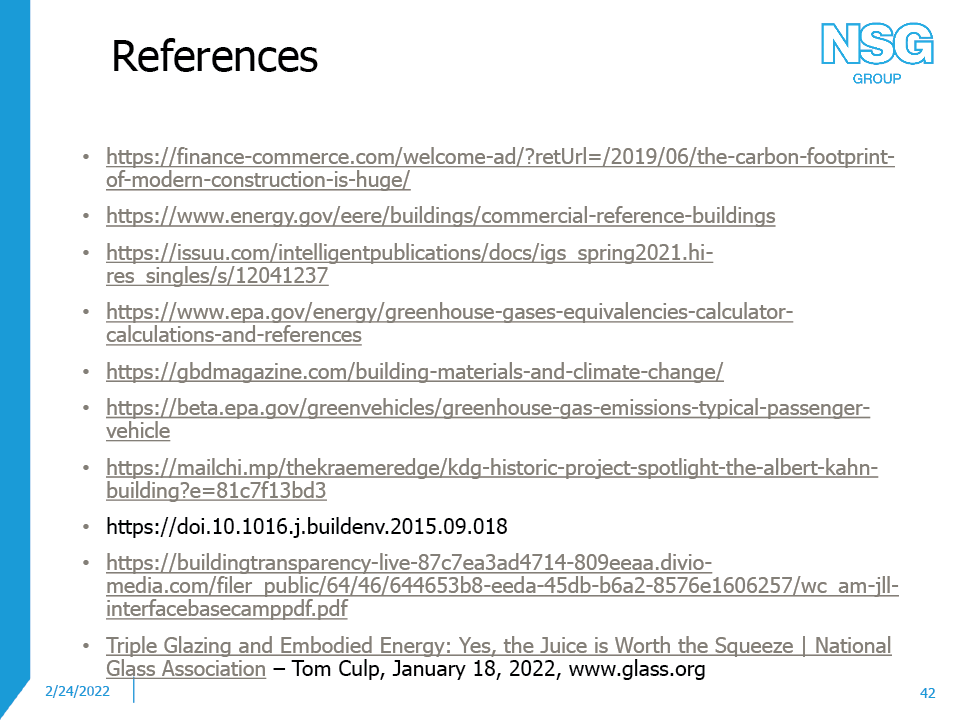Understanding the Whole Life Carbon of Windows
This post is taken from a presentation by Kate Allen, president of Allen Metals, and Kyle Sword, manager of business development at NSG Pilkington, presented at an NESEA conference.
Description
Windows and glazing play a disproportionate role in a building’s performance compared to other parts of the assembly. As we strive to meet our 2030 and 2050 climate goals the design strategies for both our new and existing buildings must be closely evaluated.
A case study of the Albert Kahn building will demonstrate how emerging glass technologies can play an important role in a building’s restoration, maintaining its architectural characteristics, and can create jobs in urban environments. A detailed examination will be paid to the embodied and operational carbon of different design strategies.
Learning Objectives
- Compare the energy reduction challenges of retrofitting versus new construction.
- Identify emerging technologies that can help upgrade existing buildings and significantly reduce carbon usage.
- Analyze how the embodied carbon and operational carbon from case studies can be applied to reduce the whole life carbon of windows.
- Maximize triple bottom line results – historic restoratoin, energy efficiency, and equity focused workforce development – while still delivering an effective and cost-efficient project.
Agenda
- Building consumption and window impact
- Window overview – performance, design, and current state
- Baseline expectations
- Albert Kahn building – case study review
- Triple bottom line project management
- Albert Kahn building – energy and carbon impact
- Emerging technologies
Download the pdf of the presentation here.











